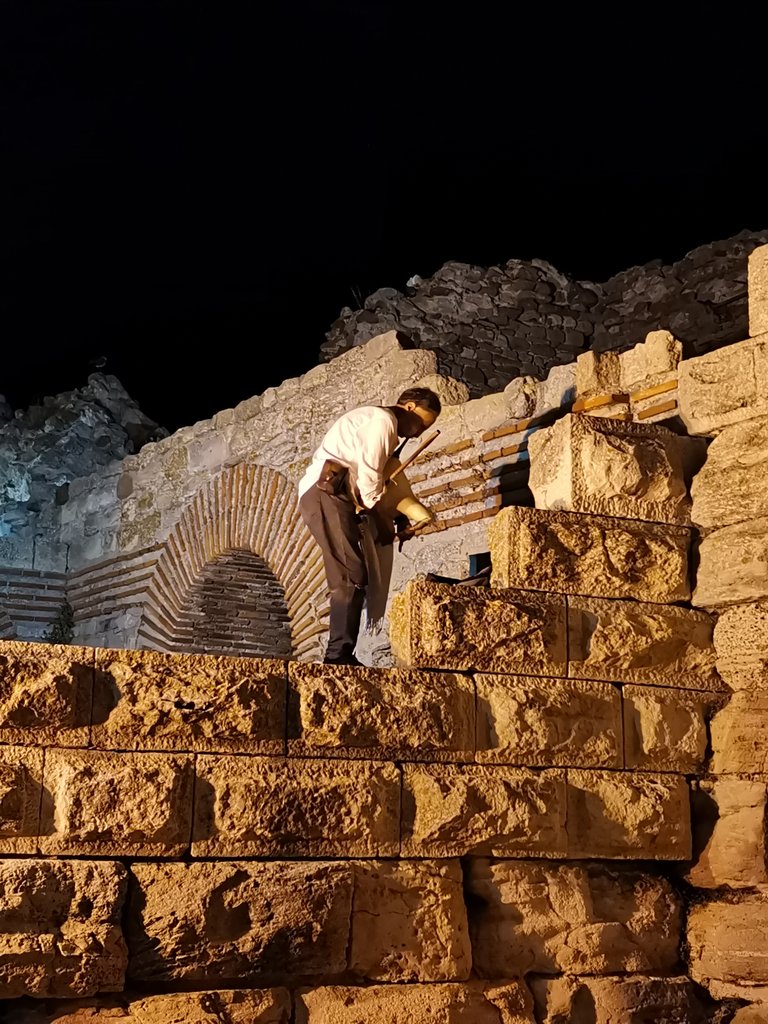Something you don't see every day

Bagpipes, a wind folk instrument with a bagpipe, known to many European and non-European peoples. It originates from Asia, and its predecessors are instruments with a bellows, which were used in ancient Rome. Roman soldiers spread them throughout the Roman Empire.
The trumpet, so characteristic of bagpipes, appeared only in the 14th century, so from that time we can talk about bagpipes in the true sense of the word, because until then there were only bags with a bagpipe. The oldest form of bagpipe with a trumpet is drawn in t. vol. Gorleston-psalter from 1306. From time immemorial, a pastoral instrument, which accompanies the village dance, bagpipes have become a military instrument in some countries. Elsewhere they reached the court; there the bagpipers had their status among the court musicians (in Bavaria the court bagpipers are mentioned around 1480). Traveling musicians also used bagpipes abundantly. In France, especially in the 18th century, they developed into an artistic instrument (musette), richly decorated. Bagpipe virtuosos enjoyed a great reputation in France (the Chedeville brothers, 18th century). In the 19th century, bagpipes from artistic musical practice disappeared, but they have remained a widespread folk instrument until today, and in Scotland a typically military instrument. The names for bagpipes vary according to individual countries and types. In England they are called bagpipe, borderpipe, in France biniou, cornemuse, in Italy cornamusa, zampogna, in Spain gaita gallega, in the Czech Republic and Poland dudy, in Slovakia gajdy i šutky, in Russia dudka.

In our country, there are bagpipes with a single-pipe picker in use in Macedonia (and also in Bulgaria) and bagpipes with a two-pipe pick-up, spread throughout Vojvodina, Srem, Serbia and Slavonia. (On dudes, which are related to bagpipes, see Dude.)
The main parts of the bagpipes are the bagpipes, the pickpocket, the dulac and the trumpet. The skin is mostly made of goat skin, because it is the thickest and strongest (the hair remains on the inside). There are three openings on the bellows: the neck and two of the front legs of the animal. The pick-up is connected to the door opening, a spout is attached to one foot opening, and a trumpet is attached to the other. Air enters the bag through the nozzle, and exits through the selector and trumpet. To squeeze the air out of the bag, the bagpiper holds it under his armpit and presses his upper arm to his own chest. The picker (bagpipe, bagpipe, double, carabiner, carabiner) is actually a single-pipe or double-pipe plum flute, which is inserted into the nasak (wooden, cylindrical pole, tucked into the bag). If the pick-up is single-pipe, there are nine holes of unequal size on it. Opposite the first hole there is a hole for the thumb of the right hand on the back of the pick-up. If the pick-up is double-pipe (twins), its pipes are given special names. There are only one dial hole on the right doubles, and that is where the sixth picker on the left dial, which has five holes, would come in. The left dial is clogged at the bottom with a wooden stopper, so it is on the side. the so-called vocal cord is cut out, so that air can escape through it. The left pick is sometimes called "kličnjak" and the right "rožnjak" because it extends into the so-called "rog" (they also call it "lula"). ro the bagpipe is performed by only two voices: the fundamental tone (that is, the octave of the trumpet tone) and the lower quartet. These tones are called da-mu. On some bagpipes, a third is performed on the cornea instead of a quartet. The blower (dulić, duvalo, dulac, puvaljica) is a wooden pipe made of plum brandy, through which the bagpiper forces the air into the bag with his mouth. A trumpet (fart, fart, fart, bucalo, horn) is a long flute tucked into a stream. It consists of three cylindrical, decorated and at the place of impact tin-plated plum pipe. On the inside, a larger idioglottian mouthpiece is inserted into the trumpet. The trumpet gives a long, humming tone, which sounds uniform throughout the bagpipe's gig. The bagpiper throws a trumpet over his left shoulder while playing.

Bagpipes are not equally tuned everywhere. This applies equally to both types, with single-pipe and double-pipe pickers. The relationships between the tones vary considerably. Some bagpipes of the first type give a melodic mol-scale with nono, others give a major-scale with a lowered seventh degree and nono. The following series can be found on bagpipes of the second type: b1, c1, d1, es1, f1, g1 or: cis1, d1, e1, g1, as1, b1, c2, d2, es2.
